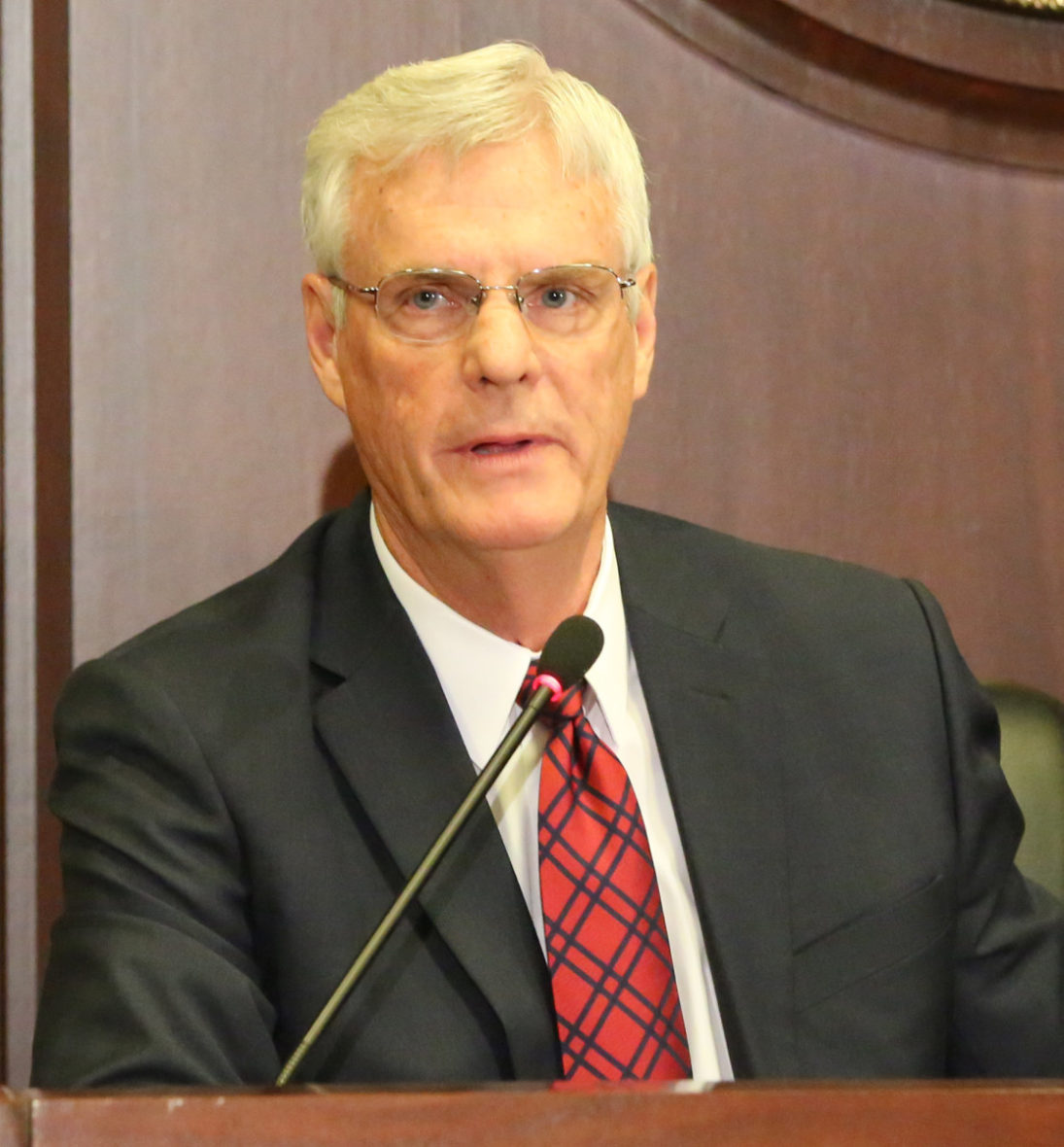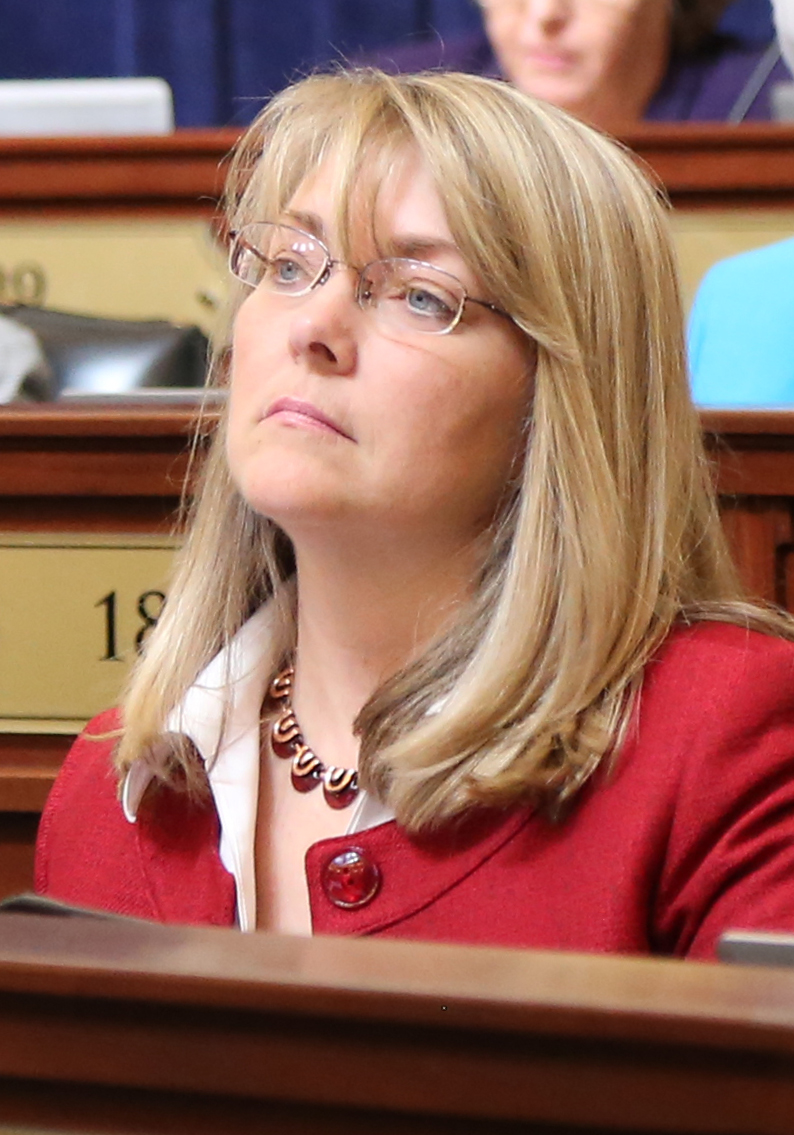State Sen. Brent Hill can remember a time when it was difficult to get a K-12 budget through the Legislature.
Not that this requires a long memory. It was only three years ago when the Senate killed the first version of a K-12 spending plan — the result of an unusual public showdown between legislative budget-writers and the Senate Education Committee.

This year, the Senate couldn’t have passed the budgets more quickly. No senators debated for or against the bills. To expedite the process, the Senate even used a procedural move to dispense with roll call votes. Hill, the Senate’s president pro tem, voted for all seven K-12 budgets. So did all 34 of his colleagues.
The 2016 legislative session’s drama centered on a stalemate between the House and the Senate over health care. When it came to writing the public schools a $1.58 billion check, the two houses and the two parties were of one mind.
This session’s floor activity says a lot about the state of Idaho’s education debate, and where the debate may be headed.
The task force — and staying the course
There weren’t many surprises in the 2016-17 K-12 budgets.
Many of the highlights came straight from the 2013 recommendations from Gov. Butch Otter’s education task force. So this year’s budget represents another installment in funding the task force’s five-year, $350 million plan:
- Year two funding for the teacher salary career ladder ($41.5 million)? Check.
- Finally returning schools’ “operational spending” to 2008-09 levels ($27.3 million)? Check.
- Launching a literacy initiative to help Idaho’s 37,000 struggling readers ($9.1 million)? Check.
“We had a plan and we followed the plan and we stayed true to the plan,” said Hill, R-Rexburg.
With the plan comes an air of familiarity, no small consideration for a part-time, citizen Legislature. The roadmap is well-marked. The policy battles have already been waged — such as 2015’s protracted debate over the mechanics of the career ladder, or, this year, the process of writing policy bills to launch the literacy initiative.
Then there’s a more pragmatic factor: money. The 2016 Legislature could easily find enough tax dollars to boost K-12 funding by $109 million, and leave $50 million in reserve. That makes it a lot easier to coalesce behind the task force’s recommendations, said Jim Weatherby, a Boise State University professor emeritus and longtime observer of Idaho politics.
The budget hardliners
Still, the K-12 budgets ran into a little bit of opposition from a handful of House Republicans.
Idaho Education News analyzed this session’s votes on K-12 spending — on the seven public schools budgets, and on a host of other bills to fund education programs. (All roll calls can be found on our Bill Tracker page.) Based on this analysis, here are the Legislature’s top five budget hardliners:
- Vito Barbieri, R-Dalton Gardens, opposed $1.58 billion in education budgets. He was the only legislator to oppose all seven K-12 budget bills, questioning whether taxpayers can afford them. He was also one of 24 House members to oppose one of the State Board of Education’s budgets — which included a $5 million boost in the state’s Opportunity Scholarship.
-

Rep. Vito Barbieri, R-Dalton Gardens Shannon McMillan, R-Silverton, opposed $1.57 billion in education budgets — including six of the seven K-12 budgets, the Opportunity Scholarship increase and a $9.7 million “trailer” budget that included funding for the STEM Action Center. She refused comment after the House passed the K-12 budgets.
- Heather Scott, R-Blanchard, opposed $1.01 billion in education budgets, including a $62.1 million budget for career-technical education.
- Gayle Batt, R-Wilder, opposed $858 million in education budgets.
- Kathleen Sims, R-Coeur d’Alene, opposed $721 million in education budgets. Sims was the only lawmaker to oppose the $9.1 million literacy budget, although she supported both of the literacy policy bills.
Batt is not seeking re-election, but the four North Idaho incumbents are on this year’s ballot. They all have Democratic opponents; Barbieri, Sims and McMillan also face challengers in the May 17 GOP primary. The question is how these education votes will resonate in their legislative districts, which all sharply skew conservative.
The four incumbents received a boost in conservative circles Wednesday, when they received post-session grades of B-minus or better from the Idaho Freedom Foundation. The group graded lawmakers on a menu of topics — from a Bible-in-schools bill to a ban on powdered alcohol. Budget bills weren’t included in the grading, although foundation Executive Director Wayne Hoffman decried this year’s K-12 budgets.
“While other states are fixing their public schools by expanding education choice, our Legislature continued to cling to the notion that more money makes everything better,” Hoffman wrote last week.
The new normal?
The 2016 session may be best remembered as the session when the Legislature deadlocked over the “gap population” — the 78,000 Idahoans who are not eligible for Medicaid or the state’s health insurance exchange. Some issues still divide the GOP caucus, said Rep. Wendy Horman, R-Idaho Falls, “(but) education really is no longer one of them.”
That isn’t to say education spending gets a rubber stamp — as was illustrated during the waning days of the 2016 session.
On the Senate side of the Statehouse, Hill and his colleagues dispensed of the seven K-12 budgets within 30 minutes. Meanwhile, in House chambers, lawmakers were embroiled in a lengthy debate over state superintendent Sherri Ybarra’s $300,000 proposal to create a rural schools pilot.

“That’s a testimony that it does take time to vet new ideas in education,” Horman said.
Horman knows about this firsthand. As a member of the Joint Finance-Appropriations Committee, she played a leading role in drafting the seven K-12 budgets and carrying them on the House floor. She also managed to convince lawmakers to approve a new school security program.
Some lawmakers were skeptical about creating a new office assigned to inspect schools for possible security breaches. Others questioned the $270,000 outlay of tax dollars. The new initiative passed — but ran into more resistance than the overall K-12 budgets.
The same can be said for the new $2 million STEM education fund, which passed, and Ybarra’s rural center proposal, which passed the House but stalled in the Senate.
There’s a well-accepted axiom in the Statehouse: It sometimes takes new ideas a session or two, or longer, to reach a critical mass of support. School security proposals had been on the table for a couple years. Lawmakers spent much of the 2016 session trying to get details about the rural center bill.
Still, funding is the overriding factor. For 2016, lawmakers had ample money for STEM and school security startup programs, and to stay the course on the task force blueprint.
“The real test would be in a downturn, when tough choices would have to be made,” Weatherby said. “Would this Legislature have the stomach to raise taxes to continue that commitment?”
